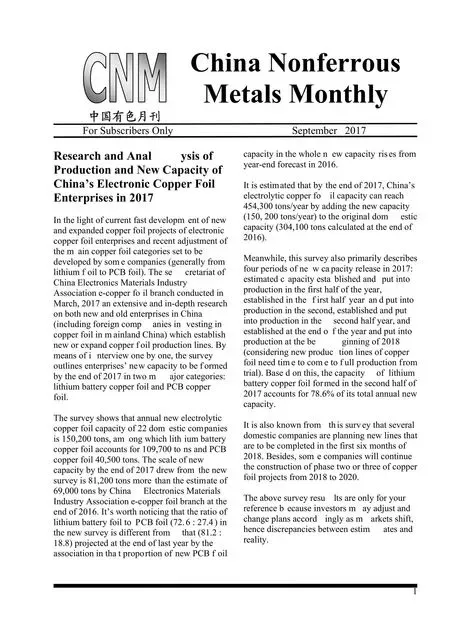The Mining-and-Selling Situation Of China’s Rare Earth Industry Is Changing
The Mining-and-Selling Situation Of China’s Rare Earth Industry Is Changing
After being rectified for several consecutive years, China’s rare earth industry was recovered in 2017. At the same time, industrial transformation and upgrading is considered to be another focus in the future.
“The effect of transformation and upgrading of rare earth industry is obvious, and the mining-and-selling situation is changing,” said He Weihua, Vice Mayor of Baotou City, Inner Mongolia Autonomous Region, a main producing area of rare earth in China, at the Ninth China Baotou Rare Earth Industry Forum. “Since the 18th National Congress of the Communist Party of China, national and local governments have issued multiple supporting policies to promote the transformation and upgrading of rare earth industry, and Baotou has preliminarily formed five industrial chains including rare earth permanent magnet, polishing, hydrogen storage, alloy and catalysis.”
Gan Yong, academician of the Chinese Academy of Engineering and chairman of the forum also said that rare earth was developing towards eight trends such as diversity and reasonability, green and cleanness, safety and high efficiency, and sustainability. He hoped Baotou to make strategic planning for the rare earth industry.
Known as the “Capital of Rare Earth” in China, Baotou has proven rare earth industrial reserves of 43.5 million tons, accounting for 38% of the world’s total and 83% of China’s total. According to He Weihua, currently Baotou has a total of 106 rare earth enterprises, including 85 new materials and terminal application enterprises; a complete industrial system covering mining, smelting, R&D, deep processing and application has taken shape. In 2016, Baotou’s rare earth industry achieved an industrial output value of 15 billion yuan.
In the south of Baotou is the Baotou National Rare Earth High-tech Industrial Development Zone known as the “Silicon Valley” in China’s rare earth industry. It is the only state-level high-tech industrial development zone named with “rare earth” in China, with a total area of 120 sq km and a population of 130,000. The rare earth permanent magnet output of the development zone increased from 3,736 tons in 2013 to 16,601 tons in 2016, an increase of 344%.
The transformation and upgrading of rare earth industry in Baotou began in 2015. In July 2015, MIIT and MOF approved Baotou’s pilot program for the transformation and upgrading of rare earth industry, and Baotou was determined as a national pilot city for the transformation and upgrading of rare earth industry. Within 3 years from 2015, Baotou will receive nearly 1 billion yuan of rare earth industry transformation and upgrading funds for 33 rare earth projects. The city aims to build itself into China’s largest demonstration base for rare earth new materials and terminal application technology R&D and industrialization by the end of 2017.
According to the Implementation Program for Pilot Transformation and Upgrading of Rare Earth Industry in Baotou City prepared by Baotou City Government, Baotou will increase the domestic market share of its high-end rare earth magnetic materials, hydrogen storage materials and special alloys from 10%, 12% and 15% in 2014 to 30%, 30% and 40% or more, realize domestic production of high-grade rare earth polishing liquid, industrialization of rare earth magnetic refrigeration materials and equipment and scale production of rare earth environmental pigments and heat stabilizers, and make the technical indicators of related products meet or exceed domestic advanced level.
During the forum, a total of 24 projects were signed, involving five industrial chains and terminal application products, i.e. rare earth permanent magnet, catalysis, polishing, alloy and hydrogen storage, with a total investment of 15 billion yuan. In addition, “Inner Mongolia Rare Earth New Material Industrial Park” was also opened on August 28.
Among the above-mentioned more than 20 signing enterprises, except several electromechanical enterprises and rare earth R&D centers, technology enterprises involving robots, magnetic materials and new materials accounted for 2/3, and regions involved included Beijing, Tangshan, Shanghai, Yantai, Shanxi, Baotou, etc.
 China Nonferrous Metals Monthly2017年9期
China Nonferrous Metals Monthly2017年9期
- China Nonferrous Metals Monthly的其它文章
- Zinc Production by Province in 2017
- China’s Major Non-ferrous Metals Imports & Exports
- Copper Mine Production by Province or City in 2017
- Lead Production by Province or City in 2017
- Fabricated Copper Production by Province or City in 2017
- Production of the Ten Major Nonferrous Metals in 2017
